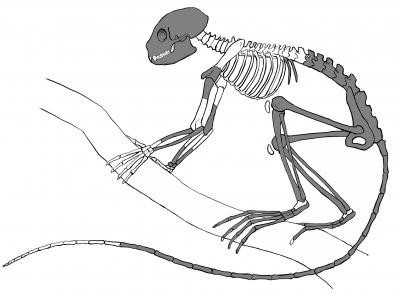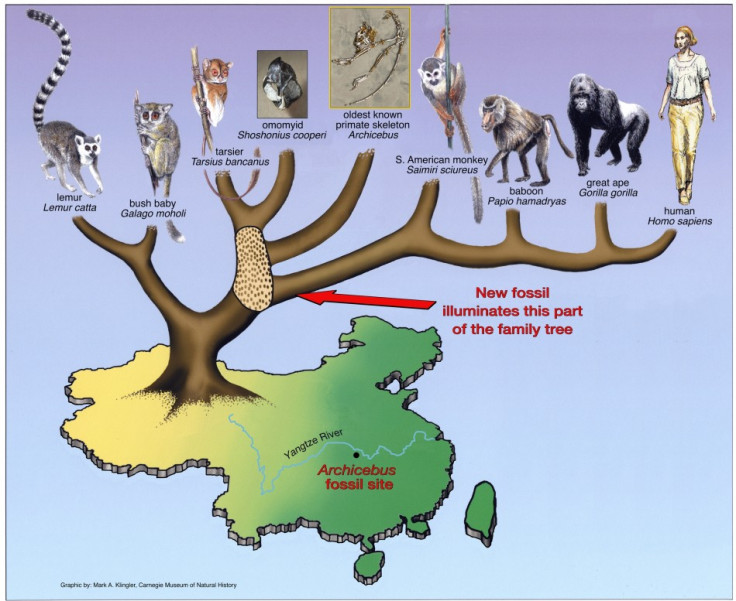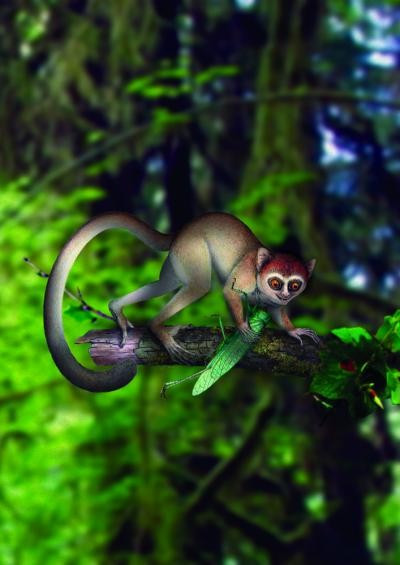World’s Oldest Primate Fossil in China Sheds Light on Human Evolution
Primate fossil of Archicebus Achilles shows evolutionary divergence between humans and lemurs

The world's oldest primate fossil skeleton has been discovered in China's Hubei province.
The previously undiscovered species, named Archicebus Achilles, was found in an ancient lake bed near the Yangtze River.
It shows the evolutionary divergence between humans, apes, modern monkeys, and tarsiers, such as lemurs and lorises.
A team of scientists, led by Xijun Ni from the Chinese Academy of Sciences in Beijing, studied the skeleton and found it was seven million years older than the oldest fossil primate skeletons previously found. It dates to around 55 million years ago.

Xijun said: "Archicebus marks the first time that we have a reasonably complete picture of a primate close to the divergence between tarsiers and anthropoids. It represents a big step forward in our efforts to chart the course of the earliest phases of primate and human evolution."
The research, published in the journal Nature, shows how Archicebus belongs to a completely separate branch of the evolutionary tree of primates and is closer to apes and humans than tarsiers.
In comparison, some of the previous oldest primate fossils found - Darwinius from Germany and Notharctus from Wyoming - were much closer to lemurs, which sit on the most distant branch of the primate family tree from humans.

Archicebus was found in sedimentary rock. It had been deposited there during the Eocene epoch, during which time much of the world was covered in tropical rainforests - palm trees grew as far north as Alaska during this era.
The team examined the skeleton by taking 3D digital reconstructions using high resolution scans. By doing this, they managed to reconstruct the skeleton in tiny detail.
Analysis of the fossil showed Archicebus would have weighed around one ounce and climbed trees. Daniel Gebo, from the Northern Illinois University, explained: "The tiny size and very basal evolutionary position of Archicebus support the idea that the earliest primates, as well as the common ancestor of tarsiers and anthropoids, were miniscule.

"This overturns earlier ideas suggesting that the earliest members of the anthropoid lineage were quite large, the size of modern monkeys."
Christopher Beard, of the Carnegie Museum of Natural History in Pittsburgh, said Archicebus was different from any other primate because it has the feet of a small monkey, limbs and teeth of a primitive primate and small eyes: "It will force us to rewrite how the anthropoid lineage evolved," he said.
© Copyright IBTimes 2025. All rights reserved.






















